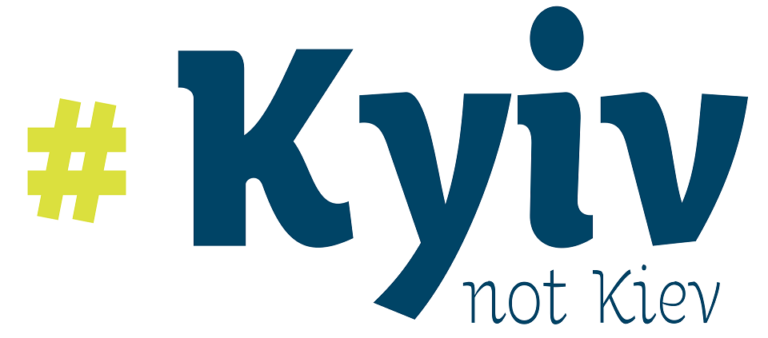

Graham Gillen
We researched the intersection of two subjects: metadata and the information war in Ukraine. The results were interesting, and sometimes very surprising. How are these topics possibly related?
- Ask any knowledge management expert how important metadata is and you will get the “are you kidding me?” look, followed by a deserved lecture on the subject. Metadata is the skeletal fabric in data which enables information to be correctly indexed, categorized, and discovered.
- The war in Ukraine is dominating media coverage and generating unprecedented amounts of information – and misinformation. Information warfare is the use and manipulation of this information to sway public opinion and impact the outcome of the conflict.


Metadata, Language and Culture Wars
Any Ukrainian citizen will tell you that the capital of Ukraine is Kyiv (KEEV), not Kiev (KEE-ev). Kiev is the old Russian spelling and pronunciation.
Obviously, spelling differences in metadata can impact search results for pictures or articles on a subject. But in a recent CMSWire article entitled ”Why Metadata Matters for Kyiv” , John Horodoski explains why it is so important for Ukraine to win this linguistic war. His points are summarized below:
- The fight for Ukraine’s independence starts with global acceptance of Ukrainian – not Russian – spelling and pronunciation. It’s “Kyiv,” not “Kiev.”
- This linguistic “war” started in 2018 with the “KyivNotKiev” online campaign, led by the Ukrainian Ministry of Foreign Affairs.
- To Ukraine, removing linguistic relics of the past is about identity and respect, separate from the old Soviet Union and Russia.
This war of words can reach extremes. People on social media are making Reuben sandwiches with “Ukrainian dressing.” Bars and restaurants are serving “White Ukrainian” but not “Moscow Mule” cocktails. Absurd or not, these examples affirm Ukraine’s identity and are an indirect measure of the success of the KyivNotKiev campaign.
Metadata Don’t Lie
Images and videos on traditional and social media have played huge roles in influencing global public perceptions of a conflict. Memorable examples from recent history include the 1989 Tiananmen Square protest, the 2003-2011 Iraq war, and the 2010 Arab Spring.
As with these events, it is critical to sift through information and disinformation in the war in Ukraine to determine the facts of what is really going on. Analyzing the metadata in videos and images – including time stamps, geolocation, etc. – can help in this analysis. We found several examples where metadata analysis of content was extremely revealing.
False Flags and False Pretenses for War
Russian president Vladimir Putin claimed he was forced to invade Ukraine after accusing the Ukrainian government of genocide, aggression and Nazism. Besides the fact that Russia had amassed over 190,000 troops on the Ukraine border over several months, an analysis of metadata reveals that Putin’s Ukraine war declaration was prerecorded 3 days prior to its release. His actions were scripted and premeditated.
The invasion was preceded by a torrent of disinformation from Russian intelligence services and separatists in Ukraine’s Donetsk region. These organizations released videos reportedly showing Ukrainian saboteurs in action and the evacuation of civilians due to these attacks. An analysis of the content and metadata showed that these were amateurish fakes and “false flag” operations.
- One video supposedly showing Ukrainian forces was actually a video of Finnish armed forces in a training exercise.
- Metadata revealed that the video of civilian evacuations was filmed days before the supposed attacks.
More from the original articles:
‘Dumb and lazy’: flawed films of Ukrainian ‘attacks’ made by Russia’s ‘fake factory’ | The Guardian
Metadata shows pro-Russian separatists filmed evacuation video days earlier | Axios.com
Fake “Fact Checks” and Misleading Viral Videos
There have also been examples of pro-Ukrainian viral videos that have not always proven to be true.
- For example, a viral social media post showing a Ukrainian pilot (the “Ghost of Kyiv”) shooting down a Russian plane was actually video game footage.
- The story of thirteen martyred Ukrainian border guards on Snake Island also proved partially untrue when some appeared a few days later – in captivity, but alive.
We would like to believe the defiant transmission by the guards, “Russian warship, go (bleep) yourself,” remains authentic.
As images and videos of burned Russian tanks and strikes on civilian targets began to appear, Russia tried to sow distrust in any content favoring Ukraine. They did so by spreading fake “fact-check” videos. “Fact-checkers” would post a video of war footage supposedly posted by Ukrainian sources and then refute the videos by claiming they found the original footage from a different date and source.
Forensic analysis of the metadata of the two videos, including creation date, editing software, video clip names and other information, showed that the two videos were created by duplicating a video and then editing a copy. Darren Linvill of Media Forensics Hub states “whoever crafted the debunking video created the fake and debunked it at the same time.”
With so much disinformation in the Ukraine conflict, trusted media outlets like the BBC sought to verify the most viral content. Similar to the examples above, a simple examination of the metadata in images could determine whether the location and time frame of the image could support the authenticity of the accompanying story.
More from the original articles on metadata and the information war in Ukraine:
In Ukraine Conflict, Fake Fact-Checks Are Being Used to Spread Disinformation | ProPublica
Ukraine invasion: Misleading claims continue to go viral | BBC News
Shirtless Putin Picture Becomes Secret Weapon
With the Russian government passing laws threatening anyone who shares “fake” information about the Ukraine “operation” with 15 years of prison time, Russian citizens and independent media have to be careful about the information they share.
But who would look guilty sharing a photo of Alpha-male, bare-chested Vladimir Putin?
Yet, buried in the image metadata are instructions in Russian and English on how to access news blocked by authorities in Russia. The instructions detail how to poke holes in the new Russian iron curtain by using VPNs, mobile apps, the Tor browser, and other tools to bypass information blocks. We will spare you from “shirtless Putin” here, but you can Google it.
Original article:
Activists send secret messages to Russians using metadata | FastCompany.com
DIY and Crowdsourced Internet Sleuthing
Recently, horrible stories and images have come out of Bucha and other Ukrainian cities vacated by Russian forces. If proven true, these stories raise the stakes on the importance of sorting fact from fabrication in the information war in Ukraine.
Anyone consuming or commentating on information coming out of Ukraine would do well to follow recommended online sleuthing guidelines to spot fake or misleading footage on social media. The US Public Broadcasting Service (PBS) offers excellent advice in the article below, including how to perform simple metadata analysis.
Spotting fake or misleading footage on social media from Ukraine war | PBS NewsHour
If DIY sleuthing is too much, you can look to a phenomenon dubbed OSINT (outsourced intelligence), which is an online form of intelligence crowdsourcing. The war in Ukraine is just the latest case study of this phenomenon. Prominent sources with website and Twitter feeds include Bellingcat and The Intel Crab. The problem with crowdsourced or aggregated intelligence, however, is that you have to trust that the “crowd” or group administrators are doing a respectable job policing the results.
More articles on OSINT, metadata and the information war in Ukraine:
The OSINT Analysts Feasting on Ukraine | NYmag.com)
Bellingcat’s Eliot Higgins on Ukraine Information War | Time
OSINT researchers went viral unpacking the war in Ukraine | Rest of World
Closing Thoughts
Framing the impact of metadata and the information war in Ukraine may seem like a cold and impersonal take on the conflict. But it does remind us that how we organize and classify information significantly impacts how users consume and gain insight from that information.
In our curation of articles on metadata analysis in the Ukraine war, we also realized that a lot of the documented work to fight disinformation was manual and could lend itself to automation using AI techniques. Perhaps that is a topic for a future blog.
For our final thought, there is this to ponder. As we were running grammar and spell-checks for this blog, the Microsoft editor suggested that all incidences of “Kiev” be changed to “Kyiv.” Only a small victory, but I think Ukrainians will take it.
If you have any thoughts or questions about this blog or Pureinsights technology and services, please feel free to CONTACT US.